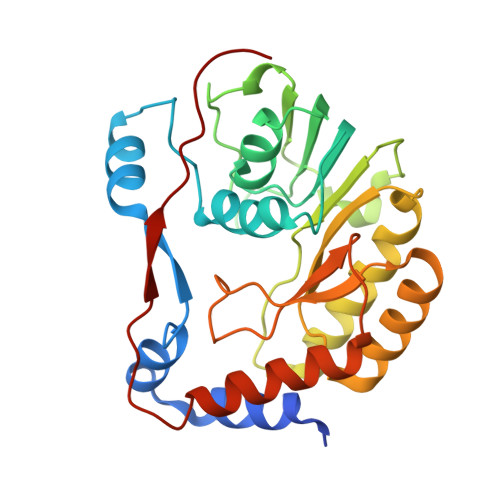Small molecule inhibitors that selectively block dengue virus methyltransferase
Lim, S.P., Sonntag, L.S., Noble, C., Nilar, S.H., Ng, R.H., Zou, G., Monaghan, P., Chung, K.Y., Dong, H., Liu, B., Bodenreider, C., Lee, G., Ding, M., Chan, W.L., Wang, G., Jian, Y.L., Chao, A.T., Lescar, J., Yin, Z., Vedananda, T.R., Keller, T.H., Shi, P.Y.(2011) J Biological Chem 286: 6233-6240
- PubMed: 21147775
- DOI: https://doi.org/10.1074/jbc.M110.179184
- Primary Citation of Related Structures:
3P8Z, 3P97 - PubMed Abstract:
Crystal structure analysis of Flavivirus methyltransferases uncovered a flavivirus-conserved cavity located next to the binding site for its cofactor, S-adenosyl-methionine (SAM). Chemical derivatization of S-adenosyl-homocysteine (SAH), the product inhibitor of the methylation reaction, with substituents that extend into the identified cavity, generated inhibitors that showed improved and selective activity against dengue virus methyltransferase (MTase), but not related human enzymes. Crystal structure of dengue virus MTase with a bound SAH derivative revealed that its N6-substituent bound in this cavity and induced conformation changes in residues lining the pocket. These findings demonstrate that one of the major hurdles for the development of methyltransferase-based therapeutics, namely selectivity for disease-related methyltransferases, can be overcome.
- Novartis Institute for Tropical Diseases, 05-01 Chromos, Singapore. siew_pheng.lim@novartis.com
Organizational Affiliation:

















